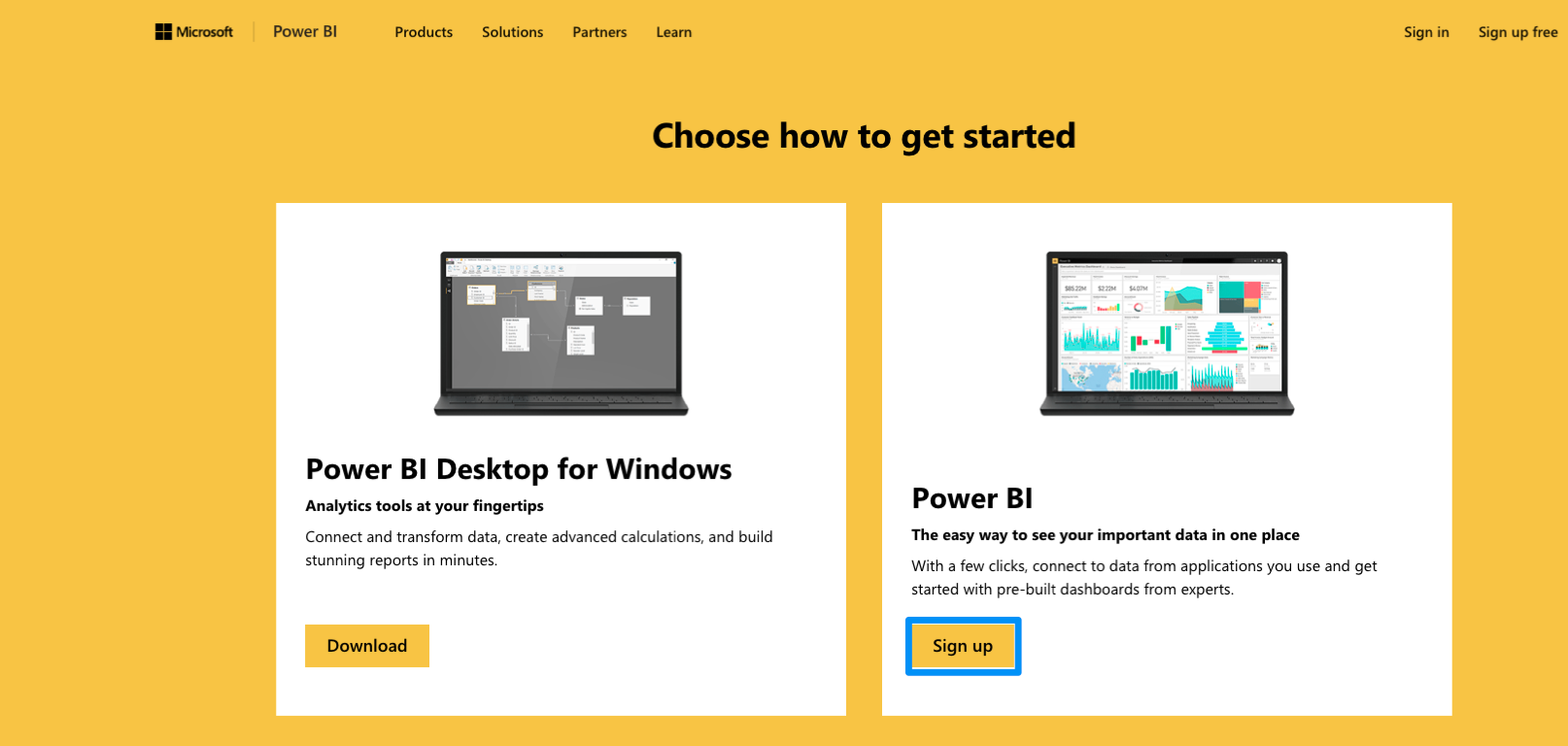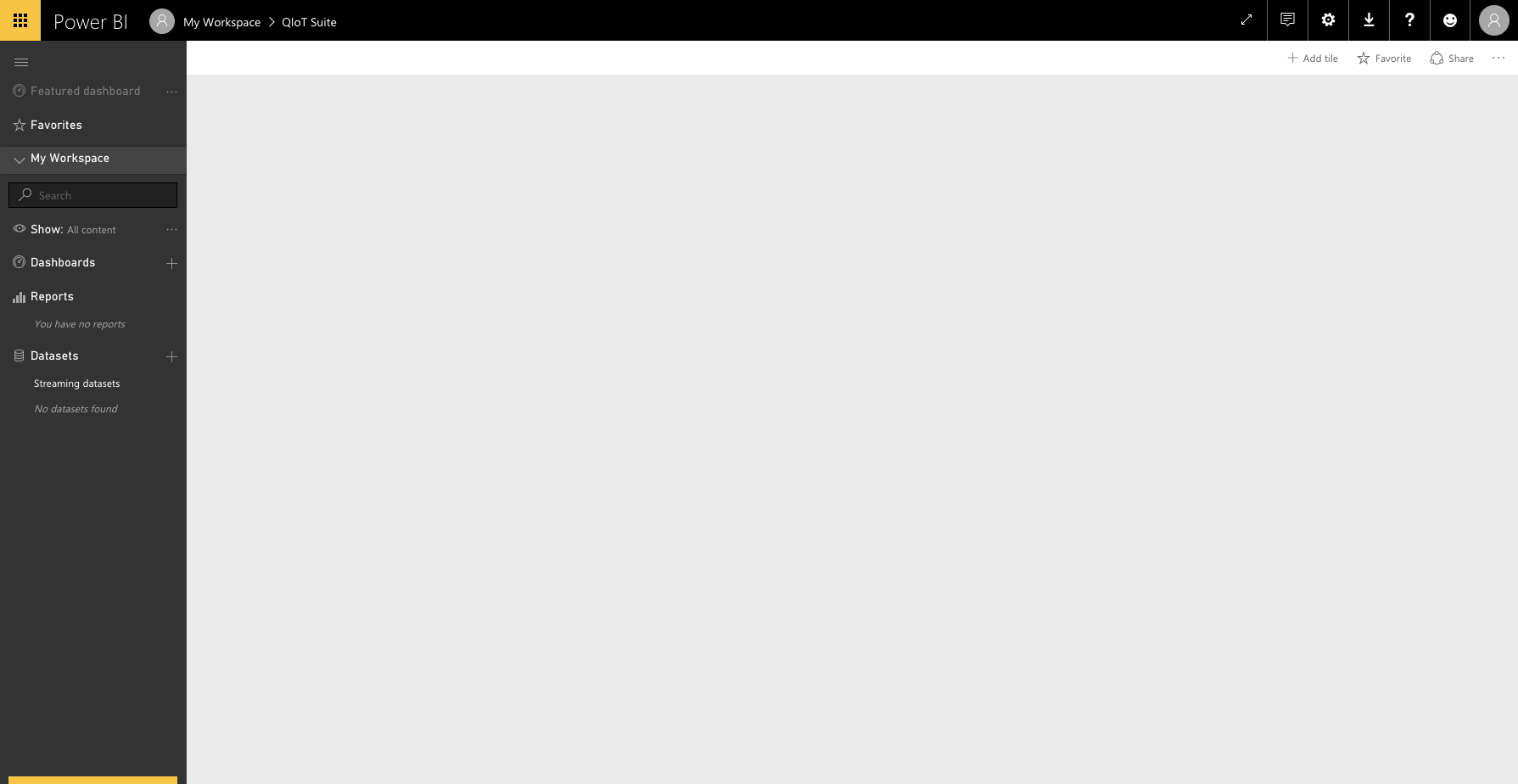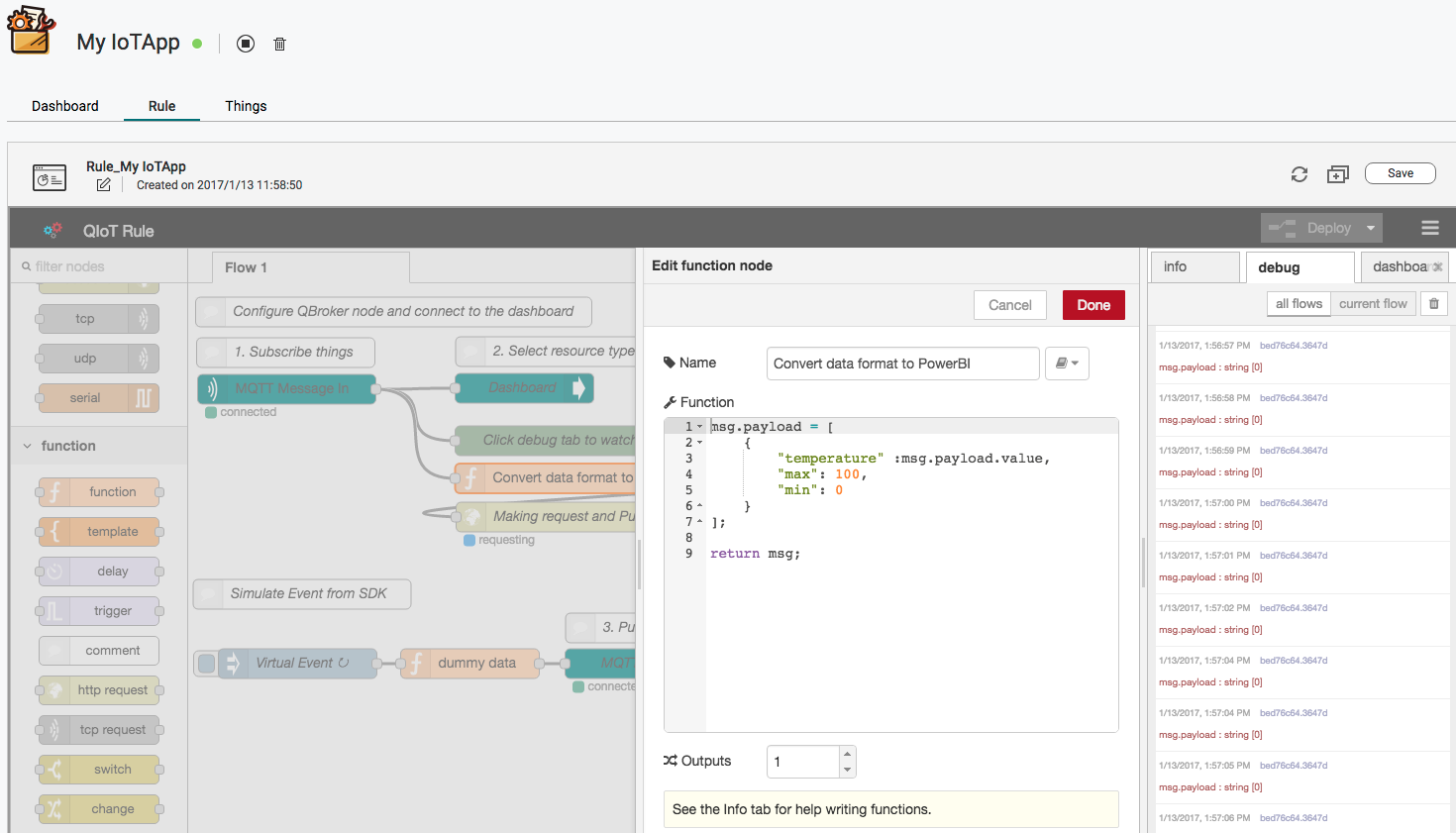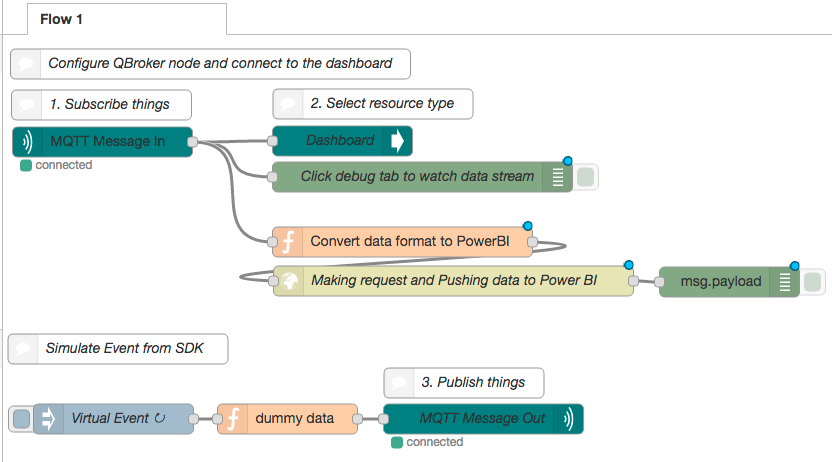1.1 Get your first Power BI account
- Sign up for a free PowerBI account at https://powerbi.microsoft.com/en-us/


- After registering, you will see the following page:

1.2 Setup your streaming dataset API
- Go to “Datasets -> Streaming datasets” on the left menu, and click “+ Add streaming dataset” in the top-right corner.

- Select “API” as your source of data, and click “Next”.

- Define your values from stream, and you will get a JSON result in the textbox. We will use this JSON code to push data to the IoT application. Click “Create” to finish.

- Once you create your data stream, you get a REST API URL which IoT applications can call using POST requests to push your live data to the streaming data dataset you created.

1.3 Configure Node-RED’s nodes in IoT application
- Create an IoT application in QIoT Suite. The following is your first Node-RED flow, and then you can start creating your own IoT flow. You can learn more about Node-RED at https://nodered.org/

- Before you start pushing live data to Power BI. We need a “function” node to convert IoT data to a streaming data dataset. Here you can replace msg.payload to your JSON dataset.

- We need an “http request” node to help us to push live data to Power BI. Just drag and drop the “http request” node and connect to the tail of the “function“ node.

- Copy and paste the REST API URL that you got from the Power BI console, and set http method to POST. Click “Deploy” to save changes.

- Your Node-RED flow will look like below.

1.4 Add tiles to display real-time data
- Go to “Dashboards +” to create your first dashboard, then click “+ Add tile” to configure a widget.

- Select “CUSTOM STREAMING DATA” and click “Next”.

- Select datasets and click “Next”.

- You will have a streaming dataset to work with, and you can get a real time gauge that looks as following.

全站熱搜



 留言列表
留言列表
 {{ article.title }}
{{ article.title }}